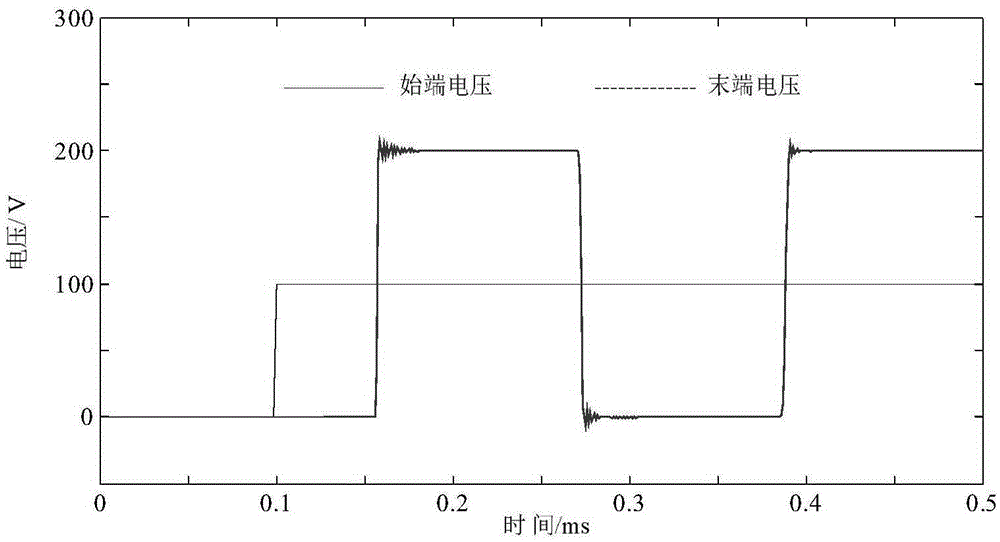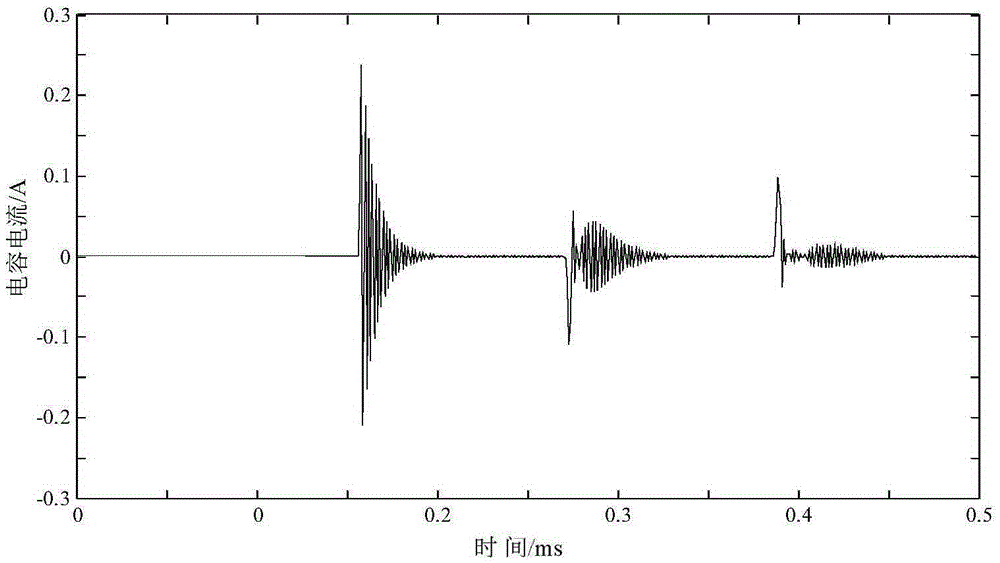Electromagnetic transient calculation method based on two-stage three-order single diagonally implicit Runge-Kutta method
An electromagnetic transient, diagonal technique, used in complex mathematical operations, etc.
- Summary
- Abstract
- Description
- Claims
- Application Information
AI Technical Summary
Problems solved by technology
Method used
Image
Examples
Embodiment Construction
[0079] Embodiments of the present invention will be briefly described below with reference to the drawings.
[0080] The implementation process of the electromagnetic transient numerical calculation method based on the 2-level 3-order single-diagonal implicit RK method proposed by the present invention is basically the same as that of the traditional electromagnetic transient numerical calculation method, and the difference is mainly in step 4) Different integration methods are used in numerical integration.
[0081] as Figure 9 The electromagnetic transient calculation of the shown uniform long transmission line no-load closing is an example, and the specific implementation steps of the present invention can be summarized as follows:
[0082] 1) Input the original data, establish the differential equation of each component, and form the basic mathematical model of electromagnetic transient numerical calculation:
[0083] Enter the transmission line unit length parameter R ...
PUM
 Login to View More
Login to View More Abstract
Description
Claims
Application Information
 Login to View More
Login to View More - R&D
- Intellectual Property
- Life Sciences
- Materials
- Tech Scout
- Unparalleled Data Quality
- Higher Quality Content
- 60% Fewer Hallucinations
Browse by: Latest US Patents, China's latest patents, Technical Efficacy Thesaurus, Application Domain, Technology Topic, Popular Technical Reports.
© 2025 PatSnap. All rights reserved.Legal|Privacy policy|Modern Slavery Act Transparency Statement|Sitemap|About US| Contact US: help@patsnap.com



